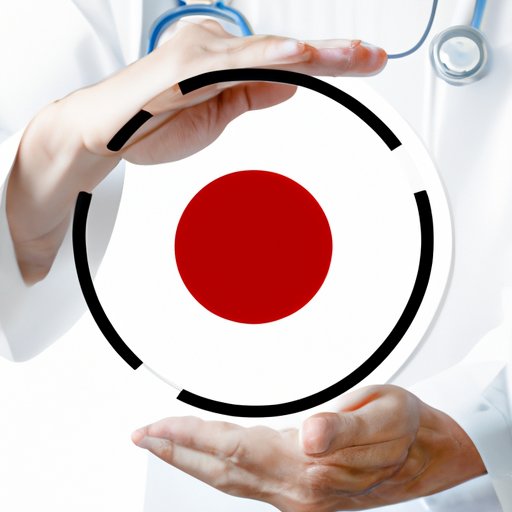
Introduction
Japan is known for its advanced technology, rich culture, and unique aesthetics. However, the country also has a reputation for its healthcare system, which is ranked among the best in the world. But is Japan’s healthcare system really free? In this article, we will explore the ins and outs of Japan’s healthcare system, debunking some myths along the way. From the cost of healthcare to the role of doctors and hospitals in Japan’s healthcare system, we will provide a comprehensive overview of the country’s healthcare landscape.
Exploring the Ins and Outs of Japan’s Healthcare System: Is it Really Free?
When it comes to healthcare coverage, Japan is unique in that it offers universal healthcare coverage to all its residents, regardless of their financial circumstances. However, this does not mean that healthcare services are completely free. Instead, Japan operates a system of co-payments, in which patients are responsible for a portion of the cost of their medical care.
In Japan, healthcare coverage is primarily provided through the National Health Insurance (NHI) program. This program is administered by local governments and is funded through a combination of taxes and contributions from individuals and employers. The NHI program covers a wide range of medical services, including doctor visits, hospital stays, and prescription medications.
Myths and Realities of Free Healthcare in Japan: What You Need to Know
One of the most common myths about Japan’s healthcare system is that it is completely free. While it is true that the NHI program provides universal healthcare coverage, patients are still required to pay a portion of the costs of their medical care. This co-payment system ensures that patients are invested in their healthcare outcomes, while also helping to control healthcare costs.
Another misconception is that Japan’s healthcare system is overwhelmed and does not have enough resources to provide high-quality care. However, Japan’s healthcare system is well-funded and efficient, with a high level of access to medical services across the country.
The Pros and Cons of Japan’s Universal Healthcare System: A Comprehensive Review
Like any healthcare system, Japan’s healthcare system has its pros and cons. On the positive side, Japan’s universal healthcare coverage ensures that all residents have access to medical care, regardless of their income or employment status. Additionally, Japan has a high level of health outcomes, including a high life expectancy and low infant mortality rate.
On the negative side, Japan’s healthcare system faces several challenges, including an aging population, a shortage of doctors in some areas, and rising healthcare costs. In recent years, the Japanese government has implemented several reforms aimed at addressing these challenges, including increased funding for medical services and new policies to attract more doctors to rural areas.
From Public Insurance to Private Options: A Look at Japan’s Healthcare Landscape
In addition to the NHI program, Japan also offers private health insurance options. These private insurance plans are typically used to supplement the coverage provided by the NHI program, covering additional medical services or providing higher levels of coverage.
However, private insurance can be expensive, and many patients rely solely on the NHI program for their healthcare coverage. In general, the NHI program provides comprehensive coverage at a reasonable cost, making it a popular choice among residents.
How Japan’s Healthcare System Works: An Inside Look at a Free System
For patients, the experience of receiving healthcare in Japan can be quite different from what they are used to in other countries. Japanese hospitals and clinics are often very clean and modern, and patients are typically seen in a timely manner. Additionally, doctors and nurses in Japan often take a more holistic approach to healthcare, taking into account a patient’s overall well-being when making treatment recommendations.
Patients in Japan also have much more access to preventative healthcare services, including regular check-ups and health screenings. This emphasis on preventative care helps to catch health issues early, before they become more serious and require more intensive treatment.
The Hidden Costs of Japan’s Free Healthcare System: Examining Factors Beyond the Price Tag
While the co-payment system used in Japan’s healthcare system helps to control costs for patients, there are some additional expenses that patients may encounter. For example, patients may be responsible for the cost of transportation to medical appointments, as well as the cost of any medications not covered by the NHI program.
Additionally, the quality of healthcare in Japan can be impacted by several factors, including the availability of doctors and medical facilities in rural areas. However, overall, Japan’s healthcare system is well-regarded for its quality and efficiency.
Achieving Universal Coverage: What the Rest of the World Can Learn from Japan’s Healthcare Model
Japan’s healthcare system offers several lessons for other countries seeking to achieve universal healthcare coverage. These lessons include the importance of a well-funded healthcare system, the role of preventative healthcare, and the need for policies aimed at addressing regional healthcare disparities.
However, it is important to note that Japan’s healthcare system is not a one-size-fits-all solution. Each country’s healthcare system must be tailored to its unique circumstances, taking into account factors such as population size, economic resources, and cultural norms.
Conclusion
In conclusion, while Japan’s healthcare system is not completely free, it does offer universal coverage to all its residents. Through a combination of funding from taxes and contributions from individuals and employers, the NHI program provides comprehensive healthcare coverage at a reasonable cost. While Japan’s healthcare system faces several challenges, including an aging population and rising healthcare costs, it remains one of the best healthcare systems in the world. Ultimately, the success of Japan’s healthcare system offers lessons for other countries seeking to improve their own healthcare systems.





